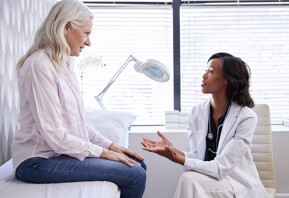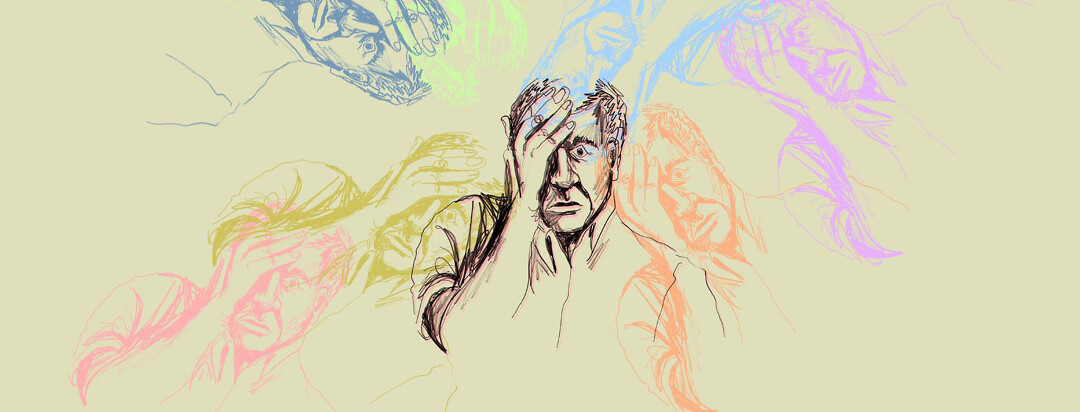Spinning in Circles With COPD?
It is inevitable that your life will change after being diagnosed with chronic obstructive pulmonary disease (COPD). You may have chronic bronchitis, emphysema, or both, and those conditions fall within the umbrella term COPD. It is a progressive disease, which means it gets worse over time. While there is no cure for COPD, there are options for treatment of the many symptoms that may occur.
Symptoms
One common symptom is feeling short of breath. Less common symptoms, such as dizziness, may be the result of another condition and should be thoroughly evaluated by your healthcare provider. It is important to have candid conversations with your healthcare provider about all symptoms you are experiencing so together you can come up with a plan to search for the cause and determine the next steps.
Why do I feel short of breath?
Respiratory system
It often helps to start with how the respiratory system is designed to work. Oxygen is breathed in through the mouth and nose and travels down the airways of the respiratory system. It then passes into the blood through the alveoli or air sacs. Once oxygenated, the blood leaves the lungs and travels throughout the body to other organs, including the brain. Our vital organs require oxygen to function and start to develop damage and injury when they are not sufficiently oxygenated.
Impact of COPD
If you have COPD, your air sacs are damaged, making it harder for the lung tissue to facilitate the transfer of oxygen from the air to the blood. This can cause shortness of breath, which may leave you feeling dizzy, weak, or fatigued. Oftentimes, when you go from lying down to sitting up, or from sitting to standing, you may experience shortness of breath. This is caused when your blood pressure drops, and less blood is going to your organs and muscles.
Coping strategies
Here are some strategies to reduce the impact:
- Get out of bed slowly. Start by sitting up and resting on the side of the bed before you go on to stand up.
- Incorporate a place to sit down and rest when you are showering, dressing, or preparing meals.
- Make sure you take your time when getting up from a chair and have something to hold on to when you stand. For example, a dining room chair with arms might be easier to maneuver than one without.
- Avoid taking very hot baths and showers.
- Stay hydrated – unless you have been told to limit your fluid intake.
- Do not walk if you start to feel dizzy.
“It used to be, as a child, that I only became dizzy on the merry-go-round or roller coaster, or other amusement rides. But I learned to avoid those rides since I don't like that feeling.” says Karen D., COPD Patient Advisory Group member for the American Lung Association.“However, as an adult, I've experienced that feeling of dizziness without the fun of being on a ride.”
The danger of falls
While the feeling of vertigo (that things are moving around you when they are stationary) is unsettling and the need to treat low oxygen levels is vital, there is an additional concern. When you become dizzy, you are more likely to fall and then you could get hurt.
According to the Centers for Disease Control and Prevention, about 36 million older adults fall each year and one in five falls causes an injury, such as a broken bone or a head injury. It is important to speak with your doctor openly if you have fallen or were afraid you were about to fall, so together you can make a plan to address the prevention of future falls.
Reducing the risk of falls
When looking to reduce your fall risk, your healthcare provider will want to review your medications to discuss any side effects that may be contributing to your dizziness. Be sure to mention over-the-counter medicines or herbal supplements as well. Other things you can do include removing trip hazards in your home, such as rugs or floor clutter. Adding grab bars in the bathroom and handrails on all staircases also helps. Falls are not a normal part of aging and preventing them should be part of any wellness plan if warranted.

How do I reduce feeling short of breath?
Properly treating COPD
If your COPD is uncontrolled, then properly treating your COPD may help alleviate some symptoms from occurring. A variety of medicines are used to treat COPD and there is no "best" medicine for all people. Each person's COPD is different, and your healthcare team will work with you to set up the best plan to address your symptoms and needs. By taking the right medicine at the right time, you can breathe better, do more of the things you enjoy, and have fewer flare-ups or exacerbations.
Additional tips
Here are some additional tips for reducing shortness of breath:
- Keep up to date on immunizations for pneumonia, influenza, or COVID-19 to protect against infections that could make your COPD worse.
- Stay active. You may consider pulmonary rehabilitation as a strategy for rebuilding strength and enjoying a fuller, more active life. Pulmonary rehabilitation programs typically combine education, exercise training, nutrition advice, and counseling, and require a prescription from your healthcare provider to participate.
- If you currently use tobacco products, including e-cigarettes, discuss with your healthcare provider options to help you quit for good.
- Sometimes with COPD, you require extra or supplemental oxygen (also called oxygen therapy) to maintain an adequate oxygen level. If your healthcare provider feels this is necessary, they will discuss options with you.
Emotional challenges
Not only are there physical challenges, but there are also emotional challenges while living with COPD. The good news is that you can find support to help you make lifestyle changes, better manage your COPD and enhance your quality of life.
If you feel alone and isolated, reaching out can help. It feels good to talk with others who understand, which has a positive impact on your health. Explore American Lung Association online groups such as the Better Breathers Network for additional resources.

Join the conversation